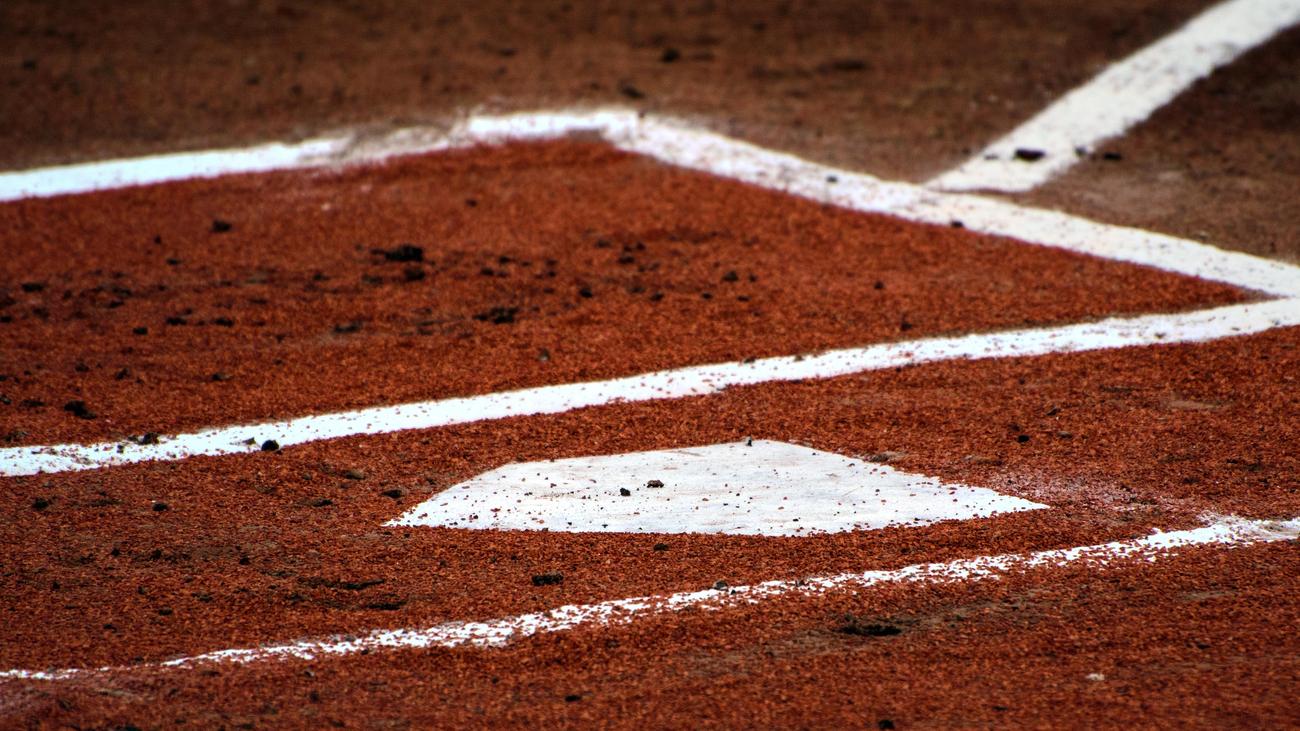Are you ready to step onto the mound and dive into the fascinating world of softball pitching? Get ready to be blown away by the captivating and lesser-known fun facts that surround this art form. In this article, we will unravel the mysteries of softball pitching and explore the remarkable techniques, strategies, and surprising facts that make it a game like no other. So, put on your glove, grab a ball, and join me as we unveil the intriguing secrets of softball pitching and embark on an exciting journey through the world of this beloved game.

Fun Facts About Softball Pitching
Softball pitching is a captivating aspect of the game that often goes unnoticed. From the unique techniques to the impressive speeds, there are plenty of fascinating facts about softball pitching that deserve our attention. So, let’s unveil some intriguing fun facts about softball pitching that will leave you amazed!
The Windmill Pitch: A Different Ballgame
Softball pitchers have a distinctive pitching technique known as the windmill pitch. Instead of the usual overhand throw seen in baseball, softball pitchers utilize an underhand motion resembling the graceful rotation of a windmill. This technique not only showcases the elegance of the game but also makes softball pitching less strenuous on the arm and body.
As Jonathan, a seasoned softball pitcher, puts it, “Imagine the windmill as a pitcher, with each revolution representing a pitch. The fluidity and rhythm of this motion is what sets softball pitching apart. It’s like an intricate dance between the pitcher and the batter.”
The Flat Mound: Leveling the Playing Field
Unlike baseball, where the pitcher’s mound is raised, softball pitchers throw from a flat mound. This means that they don’t have the advantage of gravity assisting their pitches. Despite this, softball pitchers are still able to generate incredible speeds with their underhand throws. It’s a testament to their skill and precision.
As Rebecca, a softball coach, explains, “Pitching from a flat mound requires a pitcher to rely solely on their technique and arm speed. It’s like throwing a dart at a target without any additional force pushing you forward. It takes immense control and mastery.”
Blazing Speeds: The Hidden Power of Underhand Pitching
Softball pitchers may not throw with the same velocity as their baseball counterparts, but they can still whip the ball at impressive speeds. With the windmill pitch, softball pitchers can generate throws surpassing 70 miles per hour (112 kilometers per hour). That’s not something to be taken lightly!
“Think about it,” says Maria, a former college softball pitcher. “Softball pitchers are essentially launching the ball towards home plate while moving their arm in a continuous circular motion. It’s like throwing a frisbee with all your might, but with pinpoint accuracy. The speed they achieve is astonishing!”
The Workhorse Pitcher: A Season on Their Shoulders
In some softball teams, there’s a tradition of having just one pitcher play the entire season. Unlike in baseball, where multiple pitchers are rotated, softball recognizes the endurance and skill of a workhorse pitcher. These athletes bear the responsibility of leading their team on the mound, being a dominant force game after game.
“Being the sole pitcher for a whole season is an incredible feat,” affirms Christina, a softball enthusiast. “They have to maintain their stamina, recover quickly between games, and continuously execute precise pitches. It’s like shouldering the weight of the entire team’s hopes and dreams.”
The Spectacle of Softball Pitching
Softball pitching is truly a dynamic and awe-inspiring sight to behold. From the fluid windmill motion to the remarkable speeds attained, there’s something captivating about the art of throwing underhand. Next time you’re watching a softball game, take a moment to appreciate the immense skill and dedication that goes into softball pitching.
In the words of Bob, a lifelong softball fan, “When you witness a softball pitcher in action, you can’t help but be enthralled. The grace, power, and precision they exhibit is mesmerizing. It’s a true testament to the beauty of the game.”
As we unveil these fun facts about softball pitching, it’s evident that softball pitchers possess a unique set of skills that make their role in the game undeniably captivating. From their fluid windmill motion to the incredible speeds they achieve, they truly are the unsung heroes of the softball diamond. So, the next time you watch a softball game, take a moment to appreciate the fascinating world of softball pitching and the amazing athletes behind it.
Softball is a fascinating sport that offers endless fun and excitement. If you’re curious about learning some mind-blowing facts about softball, you’re in for a treat. Prepare to have your mind blown with these fun facts about softball. Did you know that softball was initially invented as an indoor game? That’s right! Softball has come a long way since its inception, and it continues to gain popularity worldwide. From the unique pitching technique to the infield fly rule, there’s so much to discover about this captivating sport. So, why wait? Dive into the world of fun facts about softball by clicking here: fun facts about softball. Get ready to be amazed!
Fun facts about softball pitching are a treasure trove of knowledge that any sports enthusiast would love to dive into. From the mesmerizing technique to the surprising history, there is so much to discover. If you’re looking for interesting facts about softball pitching, look no further than our article. We’ve gathered a collection of captivating information that will keep you hooked from start to finish. So, whether you’re a seasoned player or simply fascinated by the sport, click here to explore the fascinating facts about softball pitching: interesting facts about softball pitching.
And if you’re ready to take your excitement up a notch, we’ve got something for you. Dive into the world of softball pitching with our comprehensive article on the most fascinating facts about softball pitching. Discover the secrets of grip, speed, and precision that have made some pitchers legendary. Let us take you on a journey through the realm of underhand throws and gravity-defying curves. Click here to embark on this thrilling adventure: fascinating facts about softball pitching.
Are you ready to be amazed by the incredible world of softball pitching? Don’t wait any longer; click on the links above and let the enchantment begin!
6 Effective Softball Pitching Drills for Kids
[youtube v=”8UH_2_LEGlM”]
Softball pitching is a unique and dynamic skill that requires precision and technique. In this article, we will explore six of the best softball pitching drills for kids that are not only fun but also help develop important pitching skills. These drills are perfect for young players looking to improve their pitching abilities and enhance their overall performance on the field.
1. Half Circles: Finding the Perfect Release Point
One of the fundamental aspects of pitching is finding the perfect release point. The “Half Circles” drill focuses on this essential skill. The pitcher enters the circle with a softball, while the catcher positions themselves behind the plate. The pitcher raises their arms over their head and delivers the pitch by moving their arm in a half circle without striding. This drill helps pitchers develop consistency in their release point and encourages healthy competition by keeping track of the number of strikes thrown.
Quote: “The quickest way to a better fastball is to unlock the elbow, as a stick produces less speed than a whip.”
2. Circle Up: Making the Delivery Endlessly Repeatable
In the “Circle Up” drill, the pitcher aims to make their delivery endlessly repeatable. Similar to the previous drill, the pitcher enters the circle with a softball, while the catcher positions themselves behind the plate. The pitcher rotates their arm in a circle three times before delivering a pitch without striding. This drill promotes healthy competition between pitchers and emphasizes the importance of a strong core and good posture throughout the pitching motion.
Quote: “Remind them to keep their arms straight on target the entire time, even after the follow through.”
3. Make it Snappy: Putting More Speed on Pitches
The “Make it Snappy” drill focuses on putting more speed on pitches. The pitcher stands about 15 feet away from the plate, while the catcher sets up behind the plate. The pitcher rests their hand with the ball down by their side and snaps the ball into the catcher’s glove using only their fingers and wrists. This drill helps pitchers improve their control, velocity, and movement by emphasizing a strong wrist snap at the end of the delivery.
Quote: “A strong wrist snap at the end of a delivery may seem like a small detail but it makes a big difference when pitching.”
4. Go the Distance: Hitting the Strike Zone
The “Go the Distance” drill focuses on hitting the strike zone consistently. Cones are evenly spaced on the ground, creating a line between home plate and the pitcher circle. The pitcher starts from the closest cone, gets into set position, and throws the ball using only the arm circle portion of their delivery. They progress to the next cone after throwing three strikes and eventually reach the pitching rubber. This drill helps pitchers warm up their arms, hone their release point, and emphasizes the importance of pitching mechanics consistency.
Quote: “When it comes to pitching mechanics, consistency is key.”
5. In the Zone: Focusing on Accuracy and Control
The “In the Zone” drill focuses on accuracy and control. The pitcher pitches the ball to the catcher with about 60 percent of their actual game effort, aiming for control over power. The goal is to throw 10 strikes before throwing four balls. This drill allows pitchers to refine their mechanics, focusing on proper grip, keeping their elbow unlocked, and releasing at waist height.
Quote: “Proper pitching form requires repetition and attention to detail.”
6. The Bullpen: Perfecting Pitches and Developing Control
“The Bullpen” drill offers pitchers the opportunity to perfect their pitches and develop control. The pitcher steps into the circle with a ball, while the catcher sets up behind the plate. They throw each of the pitches they’ll use in the actual game multiple times, gradually increasing velocity. This drill also challenges pitchers to throw pitches to each of the four corners of the strike zone, honing their accuracy and control.
Quote: “Great pitching comes from lots of repetition, with a focus on proper arm position and avoiding any flexing or twisting.”
These six softball pitching drills for kids provide a comprehensive approach to developing important pitching skills. By incorporating these drills into practice sessions, young players can improve their technique, control, and speed. Remember, repetition, attention to detail, and maintaining proper mechanics are key elements for success in softball pitching.
FAQ
Question 1
What is the advantage of softball pitchers being able to pitch multiple games in a row?
Answer 1
Softball pitchers have the advantage of being able to pitch multiple games in a row, which is not common in other sports. This allows teams to rely on one pitcher for the entire season, reducing the need for substitutions and providing consistency in the pitching performance.
Question 2
How is softball pitching different from baseball pitching?
Answer 2
Softball pitching differs from baseball pitching in several ways. Firstly, softball pitches are thrown underhand, which is less strenuous on the arm compared to the overhand pitches in baseball. Additionally, the pitcher’s mound in softball is flat rather than raised, and pitchers use a windmill motion to deliver the ball.
Question 3
What are some interesting facts about the underhand softball pitch?
Answer 3
The underhand softball pitch, also known as the windmill pitch, has some fascinating aspects. One impressive fact is that softball pitchers can whip the ball at speeds exceeding 70 miles per hour (112 kilometers per hour) with the underhand pitching technique. This showcases the power and skill of these athletes.
Question 4
Why is the windmill pitch the chosen style in softball?
Answer 4
The windmill pitch is the chosen style in softball mainly because it allows for greater control and accuracy. The underhand motion provides more time for pitchers to adjust their aim and deliver the ball where intended. It also enables various pitching techniques, such as curveballs and riseballs, to be effectively executed.
Question 5
What are some strategies used by softball pitchers to outsmart batters?
Answer 5
Softball pitchers employ various strategies to outsmart batters. One common tactic is changing speeds, where pitchers alternate between faster and slower pitches to keep batters off balance. They may also mix up the location of their pitches, aiming for different corners of the strike zone to confuse hitters. Another strategy is using deceptive windup motions to distract or deceive batters before releasing the pitch. These strategies require skill, intuition, and a deep understanding of the game.
- Star Ring Trends: Etsy vs Amazon - March 28, 2025
- Boost Pollinator Habitats: Baby Blue Eyes Sustainable Farming Guide - March 28, 2025
- Protect Big Black Bears: Effective Conservation Strategies - March 28, 2025
















